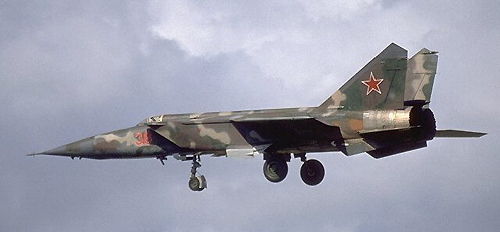To reduce the mass of the systems, advanced materials (composites) are needed in all structural components.And recalled the MiG-25 Foxbat. Built to counter a high-altitude bomber that never made it into production it was rumored to be one hell-on-wheels wonder machine.
Then Viktor Belenko flew his MiG-25 to Japan in 1976, and defected. The USAF got to dismantle the bird (before returning it in thirty crates - take that KGB) and found that
- Welding was done by hand and construction was relatively crude. As in many Soviet aircraft, rivet heads were left exposed in areas that would not adversely affect aerodynamic drag.
- The aircraft was built of a nickel-steel alloy, and not titanium as was assumed (though some titanium was used in heat-critical areas). The steel construction contributed to the craft's massive 64,000 lb (29 ton) unarmed weight.
- The majority of the on-board avionics were based on vacuum tube technology, not solid-state electronics. Seemingly obsolete, the use of vacuum tubes was ingenious because they were far less susceptible to EMP in case of nuclear warfare and were more tolerant of temperature extremes, removing the need for complex environmental control inside the avionics bays. In addition, the vacuum tubes were easy to replace in remote northern airfields where sophisticated transistor parts may not have been readily available. As with all Soviet aircraft, the MiG-25 was designed to be as rugged as possible.
The MiG-25 was built 'good enough' for it's mission and environment; to fly high, fast and shoot missiles at enemy bombers and serviced by poorly trained conscripts.
The point? I am no engineer but it seems likely to me that the people that do build space elevator lifters might do well to take a page from the Russian design book and go cheap but sturdy where possible. If a surface is not going to be exposed to airflow - why not use exposed rivet heads? If steel works and is cheaper than the alternative - why not use it?
Yes, mass matters but it's not nearly as critical as a high-performance interceptor or a rocket. Lifters will after all leave their motor and fuel on the ground. Any minor weight penalties will incur against the profit margin (less cargo capacity) and not performance.
It seems like an area where 'good enough' will work.

